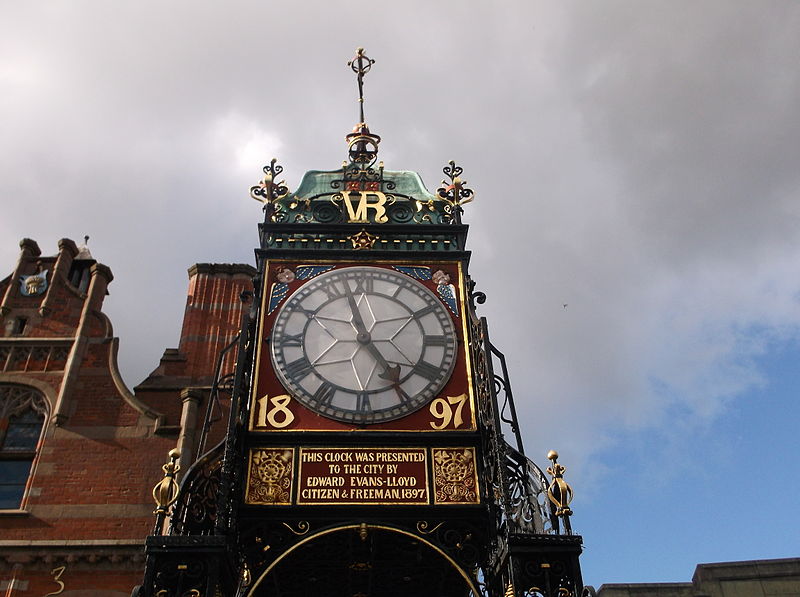Eastgate Clock, Chester

Facts and practical information
The Eastgate Clock, a prominent landmark in the historic city of Chester, United Kingdom, stands as a testament to Victorian engineering and aesthetic grandeur. Perched atop the Eastgate, an original entrance to the Roman fortress Deva Victrix, this ornate timepiece is a celebrated feature of the city's walls. The clock was erected in 1899 to commemorate the diamond jubilee of Queen Victoria two years prior.
The Eastgate Clock is often cited as the second most photographed clock in England, after the iconic Big Ben in London. Its distinctive wrought-ironwork and richly colored clock face make it a visual delight for visitors and locals alike. The clock marks the entrance to Chester's main shopping street, adding a touch of historical elegance to the bustling city center.
While the metadata tags the Eastgate Clock as a bridge, it is not a bridge in the conventional sense. Instead, it bridges the past with the present, standing over an archway that once allowed passage through the ancient city walls. The structure beneath the clock has served as a walkway for centuries, providing a unique vantage point for viewing the city.
The clock's elaborate design features a clock face on all four sides, ensuring that time can be seen from any direction. It was designed by the renowned architect John Douglas, who contributed significantly to Chester's Victorian cityscape. The Eastgate Clock has undergone several restorations to preserve its beauty and functionality, ensuring it remains a cherished part of Chester's heritage.
Eastgate Clock – popular in the area (distance from the attraction)
Nearby attractions include: Deva Victrix, Chester Cathedral, Crypt Chambers, Bear and Billet.
Frequently Asked Questions (FAQ)
Which popular attractions are close to Eastgate Clock?
How to get to Eastgate Clock by public transport?
Bus
- Foregate Street Stop BB • Lines: 4 (3 min walk)
- Foregate Street Stop CC • Lines: 16 (3 min walk)
Train
- Chester (15 min walk)
















